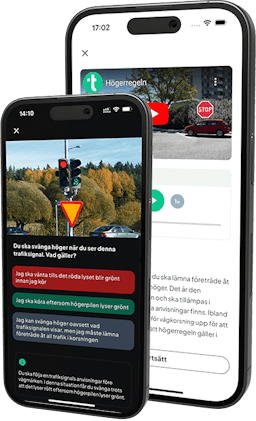There are numerous instructions in place which ensure that everything works as it should on the roads, such as road signs and traffic lights. In certain places, there may be multiple different instructions. At junctions, there may be both traffic lights and also a police officer who is signalling. In this case, you should follow the police officer’s instructions. There is an order of precedence which tells you which set of instructions you should follow.
You should prioritise instructions on the road in the following order:
- Police officer’s signals
- Traffic lights
- Road signs
- Rules
Signals by Police Officer
- Stop (A)
- Stop (B)
- Stop (C)

- Drive forward (A)
- Reduce speed (B)
- Control (C)

- Advanced information of control (A)
- Reduce speed (B)
- Reduce speed (C)

- Follow & stop behind the police vehicle when it stops (A)
- Drive to the side of the road & stop in front of the police vehicle (B)

In addition to the police, there are certain other persons who are also authorised to instruct traffic. These include vehicle inspectors, road transport managers and traffic officers at roadworks. If a traffic officer holds up a red flag then you must stop until the flag is lowered.
Traffic Lights
Red light (A) means stop. Stop just before the stop line. If there is no stop line, stop right at the lights.
Red and amber lights (B) mean stop, but be prepared to drive as the traffic light will soon change to green.
Green light (C) means that you can drive on.

Solid amber light (A) means stop. The traffic light will soon change to red. If you have already driven so far ahead when the traffic lights change from green to amber that it is impossible to stop without posing any danger, then you should continue driving.
If the amber light is flashing (B), then other instructions at the junction apply, such as the duty to stop or duty to give way. If there are no road signs, then the priority to the right-rule applies. In this situation, you should exercise extra caution and pay close attention to what applies at the junction.
If the traffic lights are switched off (B) then the same applies as for flashing amber; that is to say, other instructions apply.
If the main traffic light is red with a green arrow pointing to the right (C), then you may not drive straight ahead. You can only drive on if you are turning to the right.


You are driving in the right lane in the image. In this situation, you can drive on even though the traffic light is red, given that you are passing the light on the right-hand side. However, you also have a duty to give way to traffic on the road you are entering.


